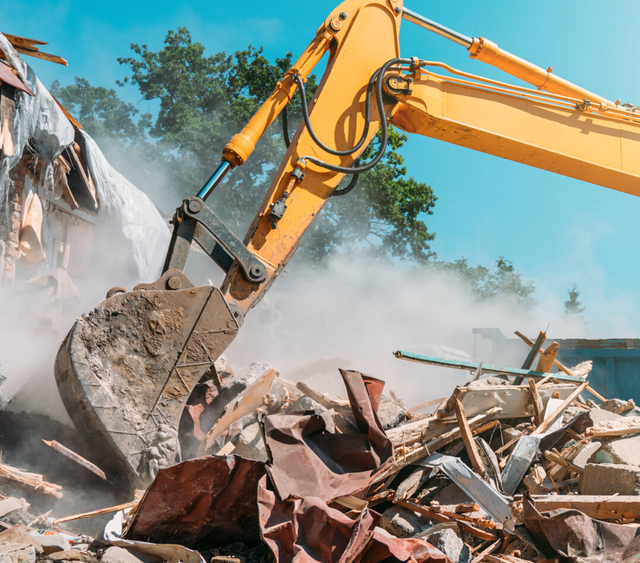The Ultimate Overview to Inside Demolition Techniques and Devices
Within the realm of indoor improvements, the art of demolition is a crucial phase that needs accuracy, skill, and the right set of devices. Whether you are a skilled specialist or a Do it yourself fanatic, understanding the intricacies of indoor demolition strategies can make all the difference in achieving an effective task result.
Vital Interior Demolition Devices
When embarking on indoor demolition projects, having the proper tools is necessary for efficiency and safety and security. One of the most essential devices for indoor demolition is the demolition hammer. This heavy-duty tool is made to break with hard materials like concrete, drywall, and floor tile.
Another important device is a reciprocating saw, which is ideal for puncturing a range of products such as plastic, metal, and wood. Its ability to make exact cuts in limited spaces makes it suitable for demolition job. Additionally, an utility knife is needed for cutting products like carpeting, plastic floor covering, and insulation. Its sharp blade guarantees clean and precise cuts, promoting the elimination of undesirable products. On the whole, having these essential interior demolition devices will significantly enhance the effectiveness and safety and security of any kind of demolition task.

Safety Preventative Measures Throughout Demolition

Additionally, all workers associated with the demolition process should obtain ample training on the correct handling of devices and tools to decrease crashes. It is important to safeguard the workspace by erecting barriers and signs to stop unapproved gain access to - interior demolition. Regularly inspecting and maintaining devices and tools can likewise add to a more secure working setting. By adhering to these safety preventative measures, indoor demolition jobs can be brought out effectively while prioritizing the health of all people involved.
Techniques for Getting Rid Of Walls
Implementing proper safety precautions during interior demolition tasks is critical for producing a secure workplace, and one essential facet of such projects includes understanding techniques for eliminating walls. One frequently used technique is hand-operated demolition, which requires the usage of standard hand tools such as sledgehammers, crowbars, and energy blades to very carefully take down the wall piece by item. This technique enables for better control over the demolition procedure, particularly in fragile areas where accuracy is vital.
For bigger, extra complicated walls, mechanical demolition may be essential. This involves utilizing hefty equipment like bulldozers or excavators to tear down walls efficiently. Nevertheless, it is crucial to guarantee that the architectural honesty of the structure is not endangered during mechanical demolition.
Another technique for removing wall surfaces is deconstruction, where the wall surface is dismantled in a manner that maintains multiple-use products. This lasting strategy is environmentally pleasant and can additionally help in reducing disposal prices. Whichever technique is employed, it is necessary to comply with appropriate security procedures and think about the structural implications of wall elimination to ensure an effective indoor demolition task.
Removing Floor Covering Like a Pro
Successfully eliminating flooring during indoor demolition calls for see post the appropriate tools and techniques to guarantee a smooth and successful procedure. The very first step in removing floor covering is to get rid of the area of any type of furniture or barriers. Next off, determine the type of floor covering to figure out the suitable removal method. For wood or laminate flooring, start by getting rid of the walls and afterwards make use of a flooring scraper to raise and separate the planks. Carpeting removal involves reducing the carpet right into workable sections and rolling it up for disposal. For tile or plastic flooring, a sculpt or floor scrape can be used to pry up the sheets or floor tiles. It's necessary to wear safety equipment such as gloves, goggles, and a mask to prevent injuries and direct exposure to dirt and particles. Additionally, having a dumpster or marked disposal location all set for the eliminated floor covering materials is essential for keeping a clean job environment. By complying with these methods and making use of the right tools, getting rid of flooring like a pro can be accomplished efficiently and successfully.
Appropriate Garbage Disposal Approaches
After successfully getting rid of floor covering making use of the appropriate devices and strategies, the following critical action in the indoor demolition procedure is applying proper waste disposal techniques. Correct garbage disposal is essential for keeping a tidy and secure work environment throughout and after demolition. Among the key techniques for waste disposal is segregating products right into different groups such as recyclable, hazardous, and basic waste. This partition guarantees that materials are thrown away properly and responsibly.

Professionals need to follow neighborhood regulations concerning waste disposal to prevent penalties and charges. Making use of specialist waste management services can improve the disposal procedure and make sure conformity with environmental guidelines. By executing appropriate waste disposal techniques, interior demolition projects can be completed efficiently and sustainably.
Conclusion
To conclude, interior demolition needs making use of necessary tools and stringent security precautions to ensure a successful and secure read this process. Techniques for removing wall surfaces and floor covering should be done thoroughly and efficiently to stay clear of any kind of damage or mishaps. Proper garbage disposal approaches are likewise essential to maintain a orderly and tidy job area. By adhering to these standards, interior demolition can be finished successfully and with very little risks.
One of the most crucial devices for indoor demolition is the demolition hammer (interior demolition). Overall, having these important interior demolition tools will significantly boost the efficiency and safety of any type of demolition task
Efficiently getting rid of flooring during indoor demolition requires the appropriate devices and techniques to make certain a effective and smooth process.After effectively removing flooring making use of the appropriate tools and strategies, the following critical step in the interior demolition process is applying proper waste disposal techniques.In verdict, interior demolition needs the usage of essential tools and stringent safety and security preventative measures to ensure a successful and risk-free procedure.